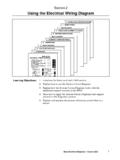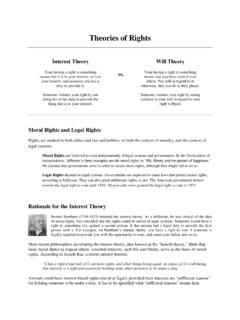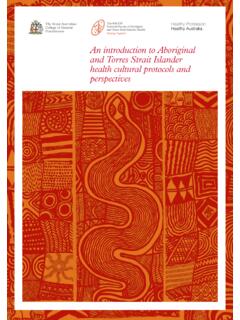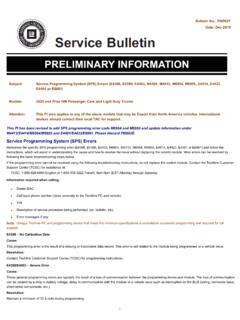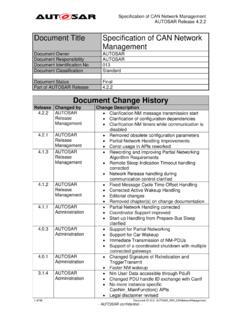Transcription of Government Control of the Media - University of Rochester
1 Government Control of the MediaScott Gehlbach and Konstantin Sonin September 2008 AbstractWe present a formal model of Government Control of the Media to illuminate variationin Media freedom across countries and over time, with particular application to lessdemocratic states. The extent of Media freedom depends critically on two variables:the mobilizing character of the Government and the size of the advertising bias is greater and state ownership of the Media more likely when the need forsocial mobilization is large; however, the distinction between state and private mediais smaller.
2 Large advertising markets reduce Media bias in both state and privatemedia, but increase the incentive for the Government to nationalize private illustrate these arguments with a case study of Media freedom in postcommunistRussia, where Media bias has responded to the mobilizing needs of the Kremlin andgovernment Control over the Media has grown in tandem with the size of the advertisingmarket. Gehlbach: University of Wisconsin Madison and CEFIR, Sonin: New Eco-nomic School, CEFIR, and CEPR, IntroductionA substantial literature ties Media freedom to good is known about thedeterminants of Media freedom itself.
3 Although correlated with the presence of democraticinstitutions, political institutions alone do not determine Media freedom. As Figure 1 illus-trates, many nondemocracies have higher levels of Media freedom than many democracies,and among the least democratic countries there is little obvious relationship between politicalinstitutions and Media , Media freedom often fluctuates within countrieseven as political institutions remain accounts for variation in Media freedom across space and time? In this paper, weprovide a formal framework to explore this question. We focus especially on less democraticstates where the Government uses the Media to mobilize citizens in support of actions thatmay not be in their individual best interest, though some of our arguments may also applyto democracies.
4 We emphasize variation along two dimensions of Media freedom:mediaownership, by which we generally mean whether the Media are state-owned or private, andmedia bias, which we define as the extent to which the Media misreport the news in favorof Government interests. As we show, Media ownership typically influences Media bias,but Media ownership itself is endogenous to the anticipated bias under state and theoretical framework stresses a fundamental constraint facing any Government seek-ing to influence Media content: bias in reporting reduces the informational content of thenews, thus lowering the likelihood that individuals who need that information to make deci-sions will read, watch, or listen to it.
5 This constraint operates in two ways. First, excessivemedia bias works against the Government s desire for social mobilization, as citizens whoignore the news cannot be influenced by it. Second, Media bias reduces advertising revenue,as Media consumption is less when pro- Government bias is large. In general, this reduc-tion in advertising revenue is costly to the Government , regardless of whether the Media arestate owned (to the extent that profits and losses of state-owned companies are internalized)or private (because the Government must subsidize private owners to compensate for lostrevenue).
6 We highlight two variables that influence the operation of this constraint. First, themobilizing character of the governmentdetermines the value the Government places on themobilization of citizens to take actions that are not necessarily in their individual bestinterest, such as voting and demonstrating in favor of the incumbent regime (Magaloni, 2006;Simpser, 2007) or exposing the corruption of local bureaucrats (Lorentzen, 2006). When theneed for social mobilization is large, the Government is more willing to pay the cost (foregoneadvertising revenue or subsidies) of Media bias.
7 Media bias may therefore be greater inautocratic states whose leaders aim to transform society, or under populist governmentsthat retain power through mass public participation, than in kleptocracies or sultanistic , holding regime type constant, Media bias will be greater in periods1 Much recent work on the topic is in the political economy literature. Representative papers includeBesley and Burgess (2002); Adser`a, Boix, and Payne (2003); Brunetti and Weder (2003); Reinikka andSvensson (2005); Besley and Prat (2006); Prat and Str omberg (2006); and Treisman (2007).
8 2 Obviously, causality cannot be inferred from the simple bivariate relationship depicted in Figure argument has parallels in Wintrobe s (1990) suggestion that repression will be greater under total-1 AFGALBDZAAGOARGARMAUSAUTAZEBHRBGDBLRBELB ENBTNBOLBIHBWABRABGRBFABDIKHMCMRCANCAFTC DCHLCHNCOLCOMCOGZARCRIHRVCUBCYPCZEDNKDJI DOMTMPECUEGYSLVGNQERIESTETHFJIFINFRAGABG MBGEODEUGHAGRCGTMGINGNBGUYHTIHNDHUNINDID NIRNIRQIRLISRITACIVJAMJPNJORKAZKENPRKKOR KWTKGZLAOLVALSOLBRLBYLTUMKDMDGMWIMYSMLIM RTMUSMEXMDAMNGMARMOZMMRNAMNPLNLDNZLNICNE RNGANOROMNPAKPANPNGPRYPERPHLPOLPRTQATROM RUSRWASAUSENSLESGPSVKSVNSLBSOMZAFESPLKAS DNSWZSWECHESYRTJKTZATHATGOTTOTUNTURTKMAR EUGAUKRGBRUSAURYUZBVENVNMYEMYUGZMBZWEFRE EPARTLY FREENOT FREE020406080100 Media Freedom 10 50510
9 DemocracyFigure 1: Media freedom and democracy. Media freedom is Freedom House Press FreedomScore, reordered so that higher values correspond to greater Media freedom. Freedom Houseclassifies countries as Free, Partly Free, and Not Free, as indicated. Democracy ispolity2variable from Policy IV dataset. Values plotted are averages for 1993 mobilization is especially important, as during an election campaign. Consistent withcross-country evidence (Djankov, McLeish, Nenova, and Shleifer, 2003), bias is generallygreater in state-owned Media , though as mobilization increases in importance, bias in stateand private Media converge.
10 Despite this convergence, the Government may be more inclinedto seize ownership of private Media when mobilization is important, as it can save the costof subsidization by controlling the Media , thesize of the advertising market, which may be influenced by such factors asmedia technology and economic regulation, determines the opportunity cost of lost consumersdue to bias in reporting. In the words of a Mexican journalist working in the 1990s atthe independentLa Jornada, telling the truth is good business (Lawson, 2002, p. 89),though the extent to which that is the case depends on the responsiveness of advertisers tocirculation, viewership, or listenership.

